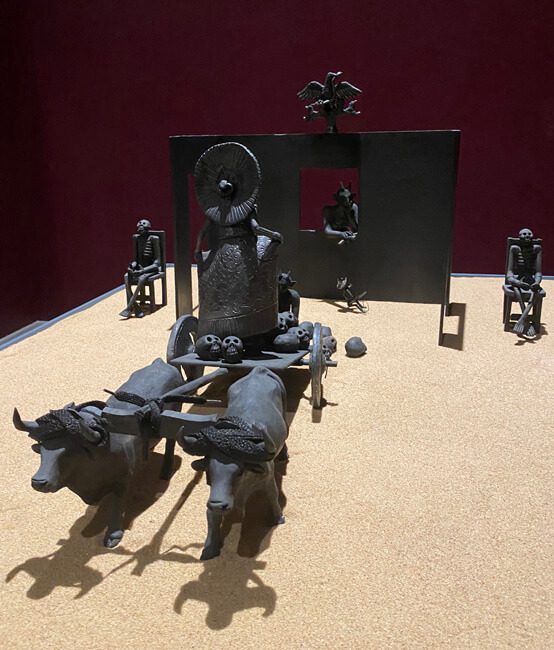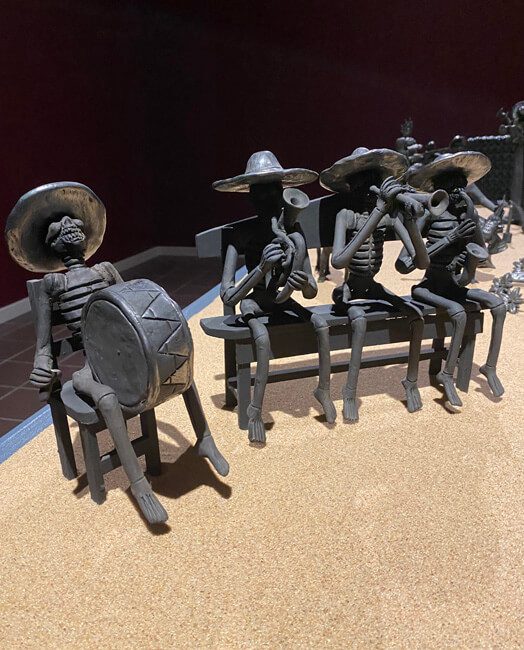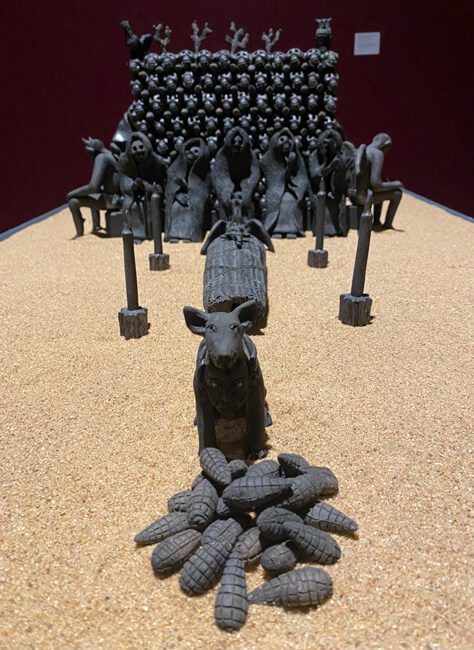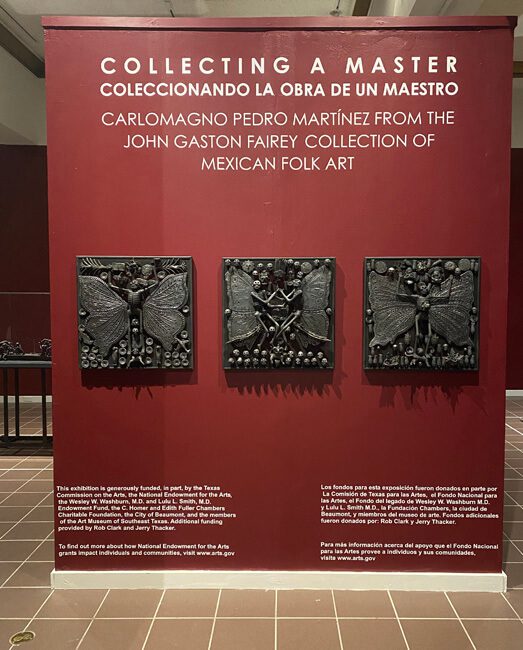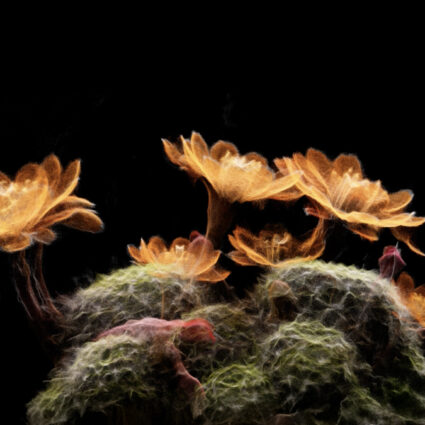Oaxacan artist Carlomagno Pedro Martínez uses folk iconography to restage Mexican history at the Art Museum of Southeast Texas.
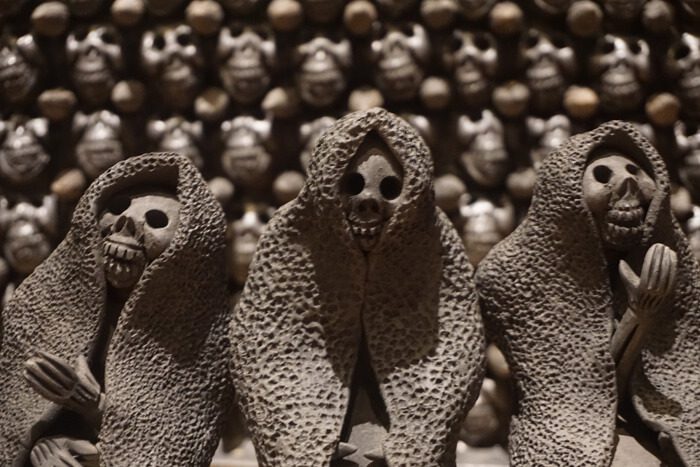
Collecting a Master: Carlomagno Pedro Martínez in the John Gaston Fairey Collection of Mexican Folk Art
October 2, 2021–March 12, 2023
Art Museum of Southeast Texas, Beaumont
In San Bartolo Coyotepec, generations of local potters mold the grey clay found only in their small pueblo in central Oaxaca in Mexico into artistic and functional matte and shiny black ceramic works. Carlomagno Pedro Martínez, a third-generation ceramicist, learned his craft from family members at home alongside his brothers and sisters. Martínez, with deep roots working with barro negro (black clay) and a voracious literary appetite, has produced dynamic installations of dozens of individual clay figures, which are on display in Collecting a Master: Carlomagno Pedro Martínez in the John Gaston Fairey Collection of Mexican Folk Art at the Art Museum of Southeast Texas in Beaumont.
These baroque reenactments of legends from Mesoamerican mythology and moments of cultural crisis in Oaxacan history appear animated by the artist’s technique of burnishing parts of the works’ surfaces to a shine that catches the viewer’s eye. Borrowing from folk iconographies—such as familiar Día de Muertos imagery including skulls, mariachi bands, and flowers—Martínez stages both allegorical scenes and specific moments culled from Mexican history.
Throughout the gallery, recurrent icons that emerge in Martínez’s sculptures include indigenous crops such as corn, the Aztec eagle symbolic of Tenochtitlan, and Day of the Dead catrinas in wide brim hats and decorative, traditional textiles rendered in black clay. One work, Wake, captures a death ritual—mourners in dark cloaks huddle on a small bench and sit with the departed loved one. Despite the fact that all of Martínez’s figures are skeletons, the sculptures appear human through the artist’s ability to mold the figures’ postures and facial expressions to depict pain and mourning in this funerary installation.
In addition to portraying cultural beliefs in the afterlife, Martínez also creates metaphorical installations that touch on themes of love, such as Allegory of Lovers and Dividing the Spoils of Mexico. In the latter, animals hold specific symbolic meanings. Crowning a pile of skulls, two birds sit opposite each other—a rooster serves as an icon of day, while an owl positioned to the right is symbolic of night. As described in Christian tradition, a devil slumps over, exhausted from stacking dozens of skulls and exploiting resources like corn and livestock from Indigenous Mesoamericans.
Two installations in the exhibition focus on the Mexican Revolution of 1910, with graphic renderings of lynched Zapatistas who resisted the corrupt federal government’s seizure of Indigenous lands to Hispanic colonists hoping to capitalize on procuring cheap land. Several figures in Mexican Revolution, 1910 Oaxaca were critical agents during the revolution, including Emiliano Zapata wearing the sombrero of the revolutionaries and his oligarchical opponent Porfirio Díaz, president of Mexico for a total of thirty-one years until he was exiled from the country in 1911.
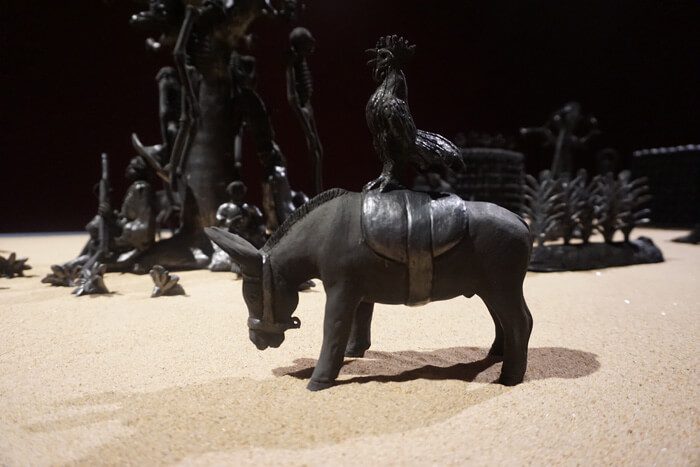
Carlomagno Pedro Martínez both preserves his family’s artisan tradition in his works and ensures the legacy of other folk artists and artforms as director of Museo Estatal de Arte Popular Oaxaca (State Museum of Popular Art of Oaxaca). The museum displays arts and crafts by artists in the central valleys of Oaxaca, with a particular focus on the barro negro artform unique to San Bartolo Coyotepec. Showing their works in the museum and beyond, Martínez and other black clay artists continue to explore their medium’s narrative and expressive potential from foundational lessons passed on to them through previous generations.
Sculptures in Collecting a Master simultaneously reflect an autochthonous past in technique and material as well as a contemporary reckoning with historical narratives that shape Mexico today. Despite colonial annihilation of Native populations and assimilation under Spanish rule, Martinez’s installations mediate monstrosities from the past with iconography in barro negro that celebrates the living descendants of Indigenous Oaxacans.
Collecting a Master: Carlomagno Pedro Martínez in the John Gaston Fairey Collection of Mexican Folk Art is scheduled to remain on view through March 12, 2023, at the Art Museum of Southeast Texas, 500 Main Street, Beaumont, Texas.
